Research
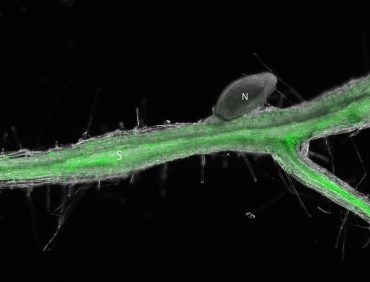
Oct. 8, 2015
Understanding spit
Scientists find how nematodes use key hormones to take over root cells Roger Meissen | Bond Life Sciences Center This Arabidopsis root shows how the beet cyst nematode activates cytokinin signaling in the syncytium 10 days after infection. The root fluoresces green when the TCSn gene associated with cytokinin activation is turned on because it is fused with a jellyfish protein that acts as a reporter signal. (N=nematode; S=Syncytium). Contributed by Carola De La Torre This is a story about spit. Not just any spit, but the saliva of cyst nematodes, a parasite that literally sucks…
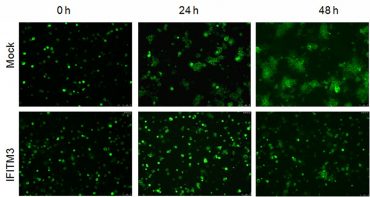
Sep. 24, 2015
Proteins limit HIV-1 infection
Cells that expressed IFITM proteins (bottom row), showed much less spread of HIV-1 compared with cells lacking the protein. | courtesy Jordan Wilkins, Liu Lab By Jennifer Lu | MU Bond Life Sciences Center For Shan-Lu Liu, thinking outside the box meant putting an antiviral protein inside HIV-infected cells, rather than into healthy ones. Liu and his team of researchers studied how interferon-induced transmembrane (IFITM) proteins limit the infection of HIV-1, the primary strain of virus responsible for AIDS. The journal Cell Reports published their results on September 17. IFITM…
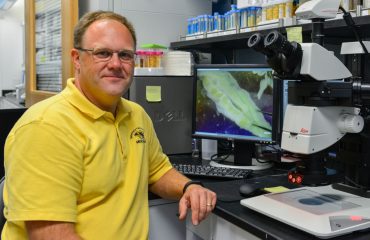
Aug. 19, 2015
The CRISPR Revolution at MU
By Caleb O’Brien | MU Bond Life Sciences Center James Amos-Landgraf, assistant professor of comparative medicine and genetics at the University of Missouri, is helping develop a pig model for colon cancer using CRISPR. //photo by CALEB O’BRIEN/Bond LSC James Amos-Landgraf needed a pig. The assistant professor of comparative medicine and genetics at the University of Missouri had joined forces with a startup company developing a tool to detect early colon cancer-causing lesions. They already tried out a rat-sized model, but still needed a full-sized prototype. Scientists in Europe had an ideal pig model for…
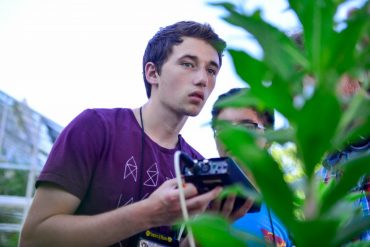
July 17, 2015
Bridging the gap between science and art
By Caleb O’Brien | MU Bond Life Sciences Center Tommy Langdon waits for a bee to land on a flower. // photo by CALEB O’BRIEN/BondLSC Emily Fulcher came face-to-face with science while dissecting a hackberry gall: “Ewww,” she exclaimed, “it’s peeking out a little bit!” Fulcher and 12 other high school students were observing plant galls as part of a Summers @ Mizzou camp exploring “The Arts as a Portal to Science Communication.” The camp, which ran Sunday through Thursday afternoon, was facilitated by three interdisciplinary scholars and artists adept at bringing together science and the arts:…
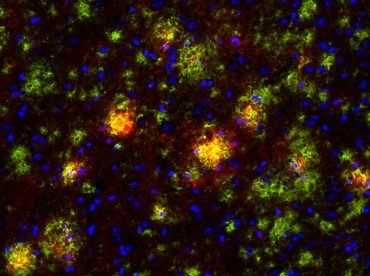
June 26, 2015
The view from the trenches: a conversation about Alzheimer’s disease
This immunofluorescence picture shows the brain of an Alzheimer’s disease mouse model, also known as the TgCRND8 mouse. In the picture, the amyloid beta plaques are stained green and the microglia, or immune cells of the brain, are stained red. Image courtesy of Luke Woods. By Caleb O’Brien | MU Bond Life Sciences Center Jean Camden and Luke Woods have an ant’s-eye view of Alzheimer’s disease. Both are bench scientists in the laboratory of Gary Weisman, a professor of biochemistry at the Bond Life Sciences Center. Jean has spent the past 12 of her 35…
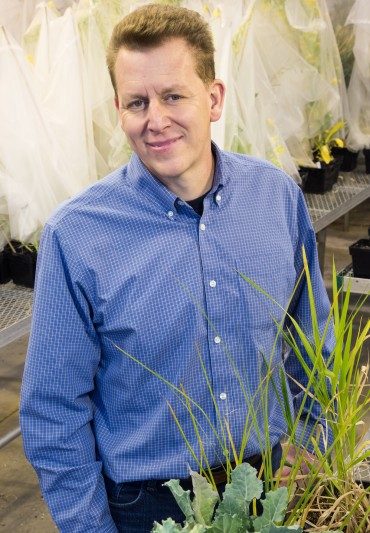
June 22, 2015
Scientists uncover how caterpillars created condiments
The next time you slather mustard on your hotdog or horseradish on your bun, thank caterpillars and brassica for that extra flavor. While these condiments might be tasty to you, the mustard oils that create their flavors are the result of millions of years of plants playing defense against pests. But at the same time, clever insects like cabbage butterflies worked to counter these defenses, which then started an arms race between the plants and insects. An international research team led by University of Missouri Bond Life Sciences Center researchers recently gained insight into a genetic basis for this co-evolution…
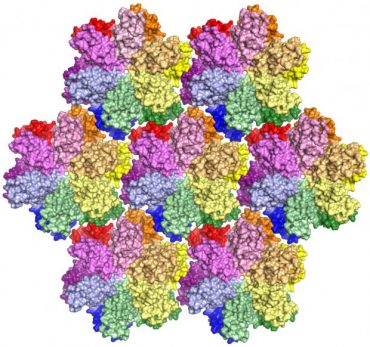
June 5, 2015
Filling in the gaps of HIV
By Caleb O’Brien | MU Bond Life Sciences Center The HIV capsid protein (shown above in an array of hexagons) plays a critical role in the virus life cycle. Bond LSC researchers recently developed the most complete model yet of this vital protein. Image by Karen Kirby and Anna Gres Seeing the whole picture can mean a lot when it comes to figuring out HIV. Researchers at the University of Missouri Bond Life Sciences Center are gaining a clearer idea of what a key protein in HIV looks like, which will help explain…
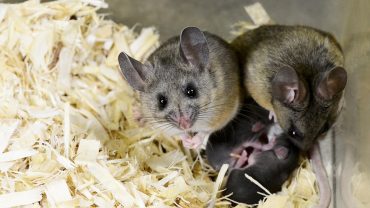
June 3, 2015
Poor parenting or BPA?
Endocrine disruptors alter parent behavior in California mice California mice exposed to bisphenol A (BPA) or ethinyl estradiol changed their parenting behavior, according to an MU Bond LSC study. | Photo by Roger Meissen, Bond LSC By Roger Meissen | MU Bond Life Sciences Center What if a chemical changes the way an animal parents? That could happen due to endocrine disruptors like bisphenol A (BPA). A recent study of California mice exposed to BPA showed parents spend less time feeding, grooming and interacting with their babies, according to University of Missouri research. Even mother mice not exposed to the…
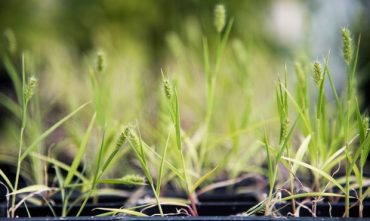
May 28, 2015
Move over Arabidopsis, there’s a new model plant in town
Bond LSC researchers showed for the first time ever that a grass, Setaria viridis, can receive 100 percent of its nitrogen needs from bacteria when associated with plant root surfaces. This grass will now serve as model for research into biological nitrogen fixation that could benefit crop development. | Photo by Roger Meissen, Bond LSC By Roger Meissen | MU Bond Life Sciences Center As farmers spend billions of dollars spreading nitrogen on their fields this spring, researchers at the University of Missouri are working toward less reliance on the fertilizer. Less dependence on nitrogen could start with a…
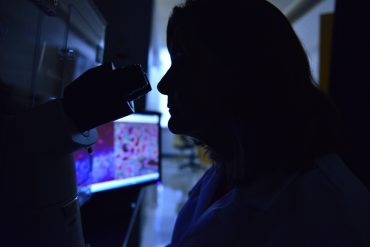
May 11, 2015
The Curious Case of Inflammation: One Lab’s Mission to Put the Pieces Together
White coat, dark room. Jean Camden, a senior technician in the Weisman lab, reviews salivary gland and brain tissue samples for research on inflammation. | Photo by Paige Blankenbuehler, Bond LSC By Paige Blankenbuehler | MU Bond Life Sciences Center There’s a criminal on the loose, striking every day. Millions fall victim, but there’s still no way to stop it. And, in all likelihood, you have been hurt by it. If inflammation is an unsolved criminal case of the last three decades, then Gary Weisman has been the detective. He’s certain there’s an accomplice — perhaps many…
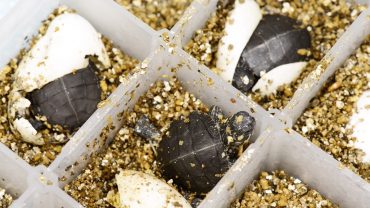
April 16, 2015
BPA overrides temperature to decide turtle sex
The environmental build-up of bisphenol A (BPA) can result in a life-changing shift for aquatic animals. For painted turtles, exposure to this chemical can disrupt sexual differentiation,, according to new research in the General and Comparative Endocrinology. Scientists at the University of Missouri have teamed up to show how low levels of certain endocrine disruptors like BPA can cause males to possess female gonadal structures in newly-hatched turtles. This collaboration between MU, Westminster College, the U.S. Geological Survey (USGS) and the Saint Louis Zoo exposed turtle eggs to levels of BPA similar to those currently found in the environment.
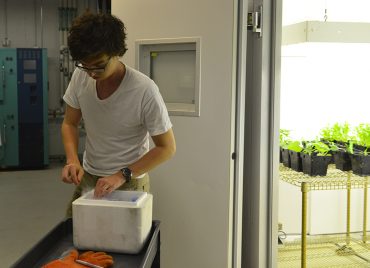
April 13, 2015
Five Bond LSC undergraduates win Arts and Sciences Scholarships
Five undergraduate researchers at Bond LSC were awarded arts and sciences scholarships to help them continue their education. Congratulations to each of the winners. Hannah Baldwin/Bond LSC MU undergraduate Wade Dismukes gathers plants from a growing room in Bond LSC to prepare for an experiment about plant evolution on Thursday, April 9, 2015. Dismukes, who won an arts and sciences scholarship, is a researcher in Dr. Chris Pires’ lab. “I got into science because I had good mentors,” he said. Wade Dismukes started his career as an undergraduate researcher at Bond LSC in Dr. Jack…